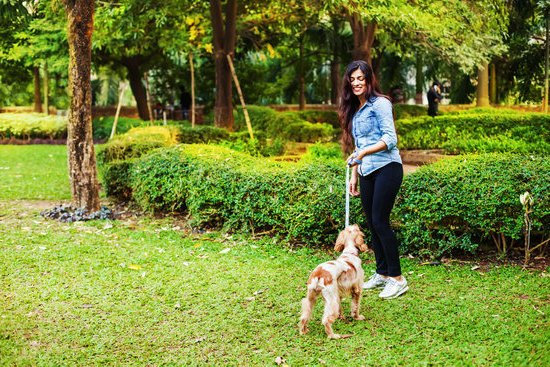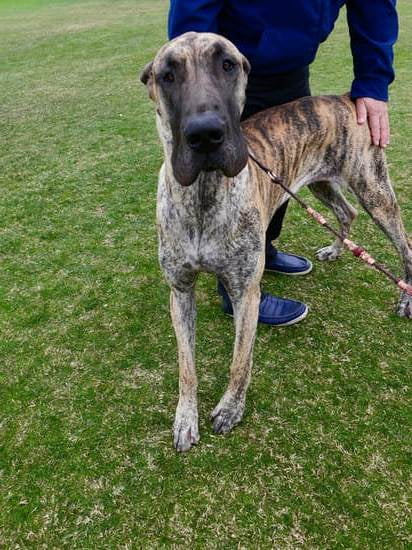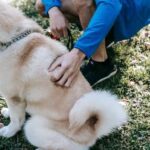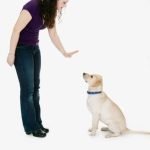Pitbulls are strong and loyal animals that have unfortunately gained a reputation for being aggressive. Understanding how to train a dog aggressive Pitbull is crucial for both the safety of the dog and those around them. It is important to note that aggression in Pitbulls can stem from various factors, including genetics, lack of socialization, fear, or previous traumatic experiences.
Identifying triggers and warning signs of aggression in your Pitbull is key to addressing and managing their behavior effectively. This can include body language such as stiffening, growling, or raised hackles. By recognizing these cues, you can intervene before a situation escalates. Consulting with a professional dog trainer or behaviorist who specializes in dealing with aggressive behaviors can provide valuable insights and guidance on how to approach training your Pitbull.
Establishing leadership and authority as the owner is essential when dealing with a dog aggressive Pitbull. Dogs thrive in structured environments where they know their place in the pack hierarchy. This involves setting clear boundaries, staying consistent with commands, and providing positive reinforcement for desired behaviors. By creating a safe and structured environment for your Pitbull, you can help them feel secure and reduce their anxiety levels – ultimately contributing to their overall well-being and behavior improvement.
Identifying Triggers and Warning Signs of Aggression in Pitbulls
Pitbulls are often misunderstood as aggressive breeds, but with the right training and understanding of their behavior, they can become loving and well-behaved companions. One crucial aspect of training a dog-aggressive Pitbull is being able to identify triggers and warning signs of aggression. By recognizing these cues early on, you can effectively manage and redirect your Pitbull’s behavior before it escalates.
To successfully train a dog-aggressive Pitbull, it is important to pay attention to body language and vocalizations that may indicate aggression. Some common warning signs include growling, baring teeth, stiff body posture, raised hackles, and intense staring. Understanding these signals can help you intervene proactively to prevent any aggressive incidents.
Here are some key triggers that may provoke aggression in Pitbulls:
- Resource guarding (food, toys, territory)
- Fear or anxiety
- Pain or discomfort
- Feeling threatened or cornered
- Previous traumatic experiences
By being aware of these triggers and warning signs, you can create a plan to address them effectively in your training sessions with your Pitbull. Remember that every dog is unique, so it may take time to identify all the specific triggers for your individual Pitbull. With patience, consistency, and the right approach, you can help your dog-aggressive Pitbull overcome their aggression and become a well-adjusted companion.
Consulting With a Professional Dog Trainer or Behaviorist
Training a dog aggressive Pitbull can be challenging, and seeking guidance from a professional dog trainer or behaviorist is highly recommended. These experts have the knowledge and experience to help you understand the root causes of your Pitbull’s aggression and provide you with effective strategies for training and managing their behavior.
When looking for a professional to work with, it is important to find someone who has experience specifically dealing with dog aggression in Pitbulls. They will be able to assess your dog’s behavior, identify triggers, and tailor a training plan that suits your Pitbull’s needs.
Here are some benefits of consulting with a professional dog trainer or behaviorist:
- Expert guidance on how to train a dog aggressive Pitbull
- Personalized training plans tailored to your Pitbull’s specific needs
- Support and advice throughout the training process
Remember that working with a professional is not only beneficial for your Pitbull but also for your own peace of mind. They can help you navigate the challenges of dealing with a dog aggressive Pitbull and provide you with the tools and techniques necessary to create a harmonious relationship with your furry companion.
Establishing Leadership and Authority as the Owner
Establishing Boundaries and Rules
To effectively train a dog aggressive Pitbull, it is crucial to establish boundaries and rules within your household. Make sure your Pitbull understands that you are the leader and that certain behaviors are not acceptable. Consistency is key when enforcing rules, as any mixed signals can confuse your Pitbull and lead to further aggression. Ensure that all family members follow the same guidelines to avoid any confusion for your pet.
Building Trust Through Respect
Building trust with your dog aggressive Pitbull is essential in training them effectively. Show respect towards your Pitbull by using positive reinforcement techniques rather than resorting to punishment. This can help strengthen the bond between you and your pet while also motivating them to exhibit desired behaviors. Remember, earning respect from your Pitbull requires patience, time, and dedication.
Being Firm Yet Gentle
When establishing leadership and authority as the owner of a dog aggressive Pitbull, it is important to find a balance between being firm and gentle. Avoid using harsh discipline methods as they can escalate aggression in your pet. Instead, use a calm yet assertive tone when correcting unwanted behaviors. By remaining composed and consistent in your approach, you can effectively train your Pitbull to respect your authority without instilling fear or anxiety.
Implementing Positive Reinforcement Training Techniques
Training a dog aggressive Pitbull requires patience, consistency, and the right approach. One effective technique that can help in shaping your Pitbull’s behavior is positive reinforcement training. This method focuses on rewarding good behavior rather than punishing undesirable actions. By using positive reinforcement, you can build trust with your dog and encourage them to exhibit the desired behaviors.
To implement positive reinforcement training techniques with a dog aggressive Pitbull, start by identifying what motivates your dog. Whether it’s treats, toys, or verbal praise, use these rewards to reinforce good behavior. For example, if your Pitbull remains calm and relaxed around other dogs during a socialization session, reward them with a treat or playtime as a form of positive reinforcement. This will help strengthen the association between desirable behavior and rewards.
Consistency is key when implementing positive reinforcement training with a dog aggressive Pitbull. Make sure to consistently reward your Pitbull for displaying appropriate behaviors and ignore or redirect negative actions. Remember that training takes time and practice, so be patient with your Pitbull as they learn new behaviors. By using positive reinforcement techniques effectively, you can promote a healthy relationship with your dog and encourage them to overcome their aggression in a positive way.
Socializing Your Pitbull With Other Dogs and People
Pitbulls are often misunderstood and can be unfairly labeled as aggressive dogs. However, proper training and socialization can help address any aggression issues in these breeds. When it comes to dealing with dog aggression in Pitbulls, one crucial aspect is socializing them with other dogs and people. Socialization helps Pitbulls build positive interactions with others, reducing the chances of aggressive behavior.
To begin socializing your Pitbull with other dogs and people, start by introducing them to well-behaved and friendly dogs in a controlled environment. This can be done at a dog park, on walks, or through obedience classes. Supervise the interaction closely and be ready to intervene if any signs of aggression surface. Gradually increase the exposure to different dogs and people to help your Pitbull become more comfortable and confident in various social settings.
Positive reinforcement is key when socializing a dog-aggressive Pitbull. Reward good behavior with treats, praise, or playtime to reinforce positive interactions. It’s important to stay patient and consistent throughout the socialization process. If you encounter any challenges or signs of aggression during interactions, seek guidance from a professional dog trainer or behaviorist who specializes in dealing with aggressive behaviors in Pitbulls.
| Socialization Tips for Dog-Aggressive Pitbulls | Benefits |
|---|---|
| Introduce your Pitbull to well-behaved dogs gradually | Builds positive interactions and reduces aggression triggers |
| Use positive reinforcement techniques during socialization | Reinforces good behavior and encourages positive interactions |
| Seek guidance from a professional trainer or behaviorist if needed | Provides expert advice on handling aggression issues effectively |
Creating a Safe and Structured Environment for Your Pitbull
Pitbulls, like any other dog breed, thrive in environments that are structured and safe. Creating this kind of setting for your Pitbull can significantly help in managing their aggression. One of the first steps in establishing a safe environment is to ensure that there are no potential triggers that may instigate aggressive behavior. Removing any stimuli such as loud noises, unfamiliar people, or other animals can prevent unnecessary stress for your Pitbull.
Additionally, it’s important to provide your Pitbull with a comfortable and secure space within your home. Whether it’s a designated area for them to rest or sleep, having a cozy spot where they feel at ease can reduce anxiety which may lead to aggression. Ensuring that your Pitbull has access to food, water, and toys at all times can also contribute to a peaceful environment for them.
In addition to the physical aspects of creating a safe environment, it’s equally crucial to establish clear rules and boundaries for your Pitbull. Consistency in enforcing these guidelines will help your dog understand what is expected of them and prevent confusion that may escalate aggressive tendencies. By setting up an environment that is predictable and free from threats, you can support your Pitbull in feeling secure and less likely to exhibit aggressive behavior.
| Training Methods | Description |
|---|---|
| Removing triggers | Identifying potential stimuli that cause aggression and eliminating them from the environment. |
| Comfortable space | Providing a cozy area with access to necessities like food, water, and toys for the Pitbull’s well-being. |
| Establishing boundaries | Setting clear rules consistently helps the Pitbull understand expectations and reduces confusion. |
Consistency and Patience in Training a Dog Aggressive Pitbull
Dog aggression can be a serious issue, especially in breeds like Pitbulls which have received negative stereotypes in the past. Training a dog aggressive Pitbull requires a significant amount of consistency and patience from the owner. It is essential to understand that changing behavior takes time and effort, so being consistent with training methods is crucial.
Consistent Training Techniques
Consistency in training means using the same commands, rewards, and corrections each time you work with your dog. This helps them understand what is expected of them and reinforces positive behaviors. When dealing with a dog aggressive Pitbull, it’s important to stick to a routine and not give mixed signals, as this can confuse them and hinder progress. Consistent training also helps build trust between you and your pet.
Patience Is Key
Training a dog aggressive Pitbull requires a lot of patience on the part of the owner. Changing behavior takes time, and it’s important not to get frustrated or lose your temper during training sessions. Remember that your Pitbull is learning new behaviors and needs time to adjust. Patience allows you to work through setbacks and challenges without becoming discouraged. Positive reinforcement techniques can help keep both you and your pet motivated during training sessions.
Seeking Professional Guidance
If you’re struggling with training your dog aggressive Pitbull, don’t hesitate to seek help from a professional dog trainer or behaviorist. These experts have experience dealing with challenging behaviors and can provide guidance on how to train a dog aggressive Pitbull effectively.
They can offer personalized advice based on your specific situation and help create a customized training plan for you and your pet. Remember, consistency and patience are essential components of successful training, but having professional support can make the process smoother for both you and your furry friend.
Monitoring Progress and Adjusting Training Methods as Needed
In conclusion, training a dog aggressive Pitbull requires patience, dedication, and a deep understanding of the breed’s behavior. By following the steps outlined in this guide on how to train dog aggressive Pitbulls, owners can effectively address and manage their pet’s aggression issues.
It is crucial to continually monitor the progress of training and be prepared to adjust methods as needed. Every Pitbull is unique, and what works for one may not work for another. Consulting with a professional dog trainer or behaviorist can provide valuable insights and guidance on how best to tailor training techniques to suit your specific Pitbull’s needs.
Remember that establishing leadership, implementing positive reinforcement techniques, socializing your Pitbull, and creating a safe environment are all key components in successfully training a dog aggressive Pitbull. With consistency, patience, and diligent monitoring of progress, owners can help their beloved pets overcome aggression issues and lead happy, balanced lives.
Frequently Asked Questions
What Causes Pitbulls to Be Aggressive?
Pitbulls can be aggressive due to a variety of factors, including poor breeding practices, lack of socialization, or past experiences of abuse or neglect. It’s important to understand that aggression in dogs is often a result of external influences rather than inherent traits.
How Do I Turn My Pitbull Into a Guard Dog?
Turning your Pitbull into a guard dog requires proper training and socialization. Start with basic obedience training to establish trust and respect between you and your dog. Then gradually introduce guard dog training techniques, such as alert barking and controlled aggression towards strangers.
How Do You Discipline a Pitbull for Biting?
Discipline in cases of biting should focus on redirection and positive reinforcement. Avoid using physical punishment, as it can escalate the aggression. Instead, work on teaching your Pitbull bite inhibition through gentle corrections and offering appropriate chew toys as an alternative outlet for their chewing behavior. Consistency and patience are key in correcting biting habits in Pitbulls.

Welcome to the blog! I am a professional dog trainer and have been working with dogs for many years. In this blog, I will be discussing various topics related to dog training, including tips, tricks, and advice. I hope you find this information helpful and informative. Thanks for reading!





